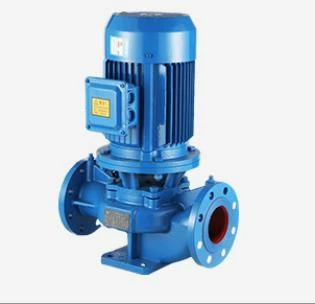English
- Afrikaans
- Albanian
- Amharic
- Arabic
- Armenian
- Azerbaijani
- Basque
- Belarusian
- Bengali
- Bosnian
- Bulgarian
- Catalan
- Cebuano
- Corsican
- Croatian
- Czech
- Danish
- Dutch
- English
- Esperanto
- Estonian
- Finnish
- French
- Frisian
- Galician
- Georgian
- German
- Greek
- Gujarati
- Haitian Creole
- hausa
- hawaiian
- Hebrew
- Hindi
- Miao
- Hungarian
- Icelandic
- igbo
- Indonesian
- irish
- Italian
- Japanese
- Javanese
- Kannada
- kazakh
- Khmer
- Rwandese
- Korean
- Kurdish
- Kyrgyz
- Lao
- Latin
- Latvian
- Lithuanian
- Luxembourgish
- Macedonian
- Malgashi
- Malay
- Malayalam
- Maltese
- Maori
- Marathi
- Mongolian
- Myanmar
- Nepali
- Norwegian
- Norwegian
- Occitan
- Pashto
- Persian
- Polish
- Portuguese
- Punjabi
- Romanian
- Russian
- Samoan
- Scottish Gaelic
- Serbian
- Sesotho
- Shona
- Sindhi
- Sinhala
- Slovak
- Slovenian
- Somali
- Spanish
- Sundanese
- Swahili
- Swedish
- Tagalog
- Tajik
- Tamil
- Tatar
- Telugu
- Thai
- Turkish
- Turkmen
- Ukrainian
- Urdu
- Uighur
- Uzbek
- Vietnamese
- Welsh
- Bantu
- Yiddish
- Yoruba
- Zulu
Telephone: +86 13120555503
Email: frank@cypump.com
Nov . 08, 2024 13:46 Back to list
Air Pump for Sand and Gravel Applications in Construction and Landscaping
The Importance of Air Pumps in Sand and Gravel Operations
In the world of construction and landscaping, the importance of efficient material handling cannot be overstated. Sand and gravel, as essential aggregates, are fundamental to various projects ranging from concrete production to road construction. Among the tools that significantly streamline the handling of these materials is the air pump, a device often overlooked in its versatility and efficiency.
Understanding Air Pumps
An air pump is a device that moves air from one place to another. In the context of sand and gravel operations, air pumps serve multiple purposes, particularly in transporting and processing these aggregates. They can be classified into several types, including positive displacement pumps and dynamic pumps, each suitable for various applications depending on the specific requirements of a project.
Applications in Sand and Gravel Operations
1. Material Transfer One of the primary uses of air pumps in the sand and gravel industry is for transferring materials. Air pumps can create a pneumatic system that transports sand and gravel through pipelines over considerable distances. This method eliminates the need for traditional conveyor belts and trucks, reducing time and labor costs while minimizing the environmental impact associated with truck transportation.
2. Separation and Classification In mining and processing operations, air pumps can be employed to assist in the separation and classification of different sizes of aggregates. This is particularly useful when working with materials containing a mix of various particle sizes. By creating air currents, sand and gravel can be fluidized, allowing for more efficient sorting based on size and weight, thereby enhancing overall processing efficacy.
3. Dust Control Dust generation is a significant concern in sand and gravel operations. Excess dust not only poses health risks to workers but can also harm the environment. Air pumps can be used in dust suppression systems to improve air quality and maintain a safe work environment. By directing moisture or other dust control agents into the air, air pumps help minimize airborne particles, ensuring compliance with health and safety regulations.
4. De-watering In many instances, sand and gravel may contain excess moisture, which can impede processing. Air pumps can facilitate de-watering by creating a vacuum that extracts excess water from the material. This not only enhances the quality of the aggregates but also makes storage and transportation more manageable.
air pump sand and gravel

Benefits of Using Air Pumps
The implementation of air pumps in sand and gravel operations brings several advantages
- Efficiency Air pumps significantly increase the speed of material transfer and processing. This efficiency can lead to quicker project completion, which is crucial in competitive industries.
- Cost-Effectiveness By reducing the reliance on labor-intensive methods and heavy machinery for transportation, air pumps can lower operational costs.
- Environmental Impact By minimizing dust and reducing the need for trucks, air pumps contribute to a smaller carbon footprint, promoting more sustainable practices in the construction industry.
- Versatility Air pumps can be adapted for various applications within the sand and gravel supply chain, making them invaluable assets in diverse operational contexts.
Conclusion
As the demand for sand and gravel continues to grow, investing in efficient equipment and technologies becomes paramount. Air pumps play a critical role in modernizing the operations of the sand and gravel industry by enhancing productivity, ensuring safety, and promoting environmental responsibility. Their multifaceted applications—ranging from material transfer to dust control—make them indispensable tools in today’s fast-paced construction landscape.
Incorporating air pumps into operational workflows not only optimizes the handling of aggregates but also equips companies to meet the challenges of a dynamic marketplace. Ultimately, leveraging the capabilities of air pumps reflects a broader trend toward innovation and efficiency in resource management, positioning businesses for success in an increasingly competitive environment. Whether one is managing a large construction site or a small landscaping project, air pumps stand out as versatile allies in achieving a seamless flow of materials.
-
Reliable Non-Clog Sewage Pumps with GPT-4-Turbo Tech
NewsAug.04,2025
-
High-Performance Air Pumps for Sand & Gravel | Efficient Transport
NewsAug.03,2025
-
ISG Series Vertical Pipeline Pump - Chi Yuan Pumps Co., LTD.|Energy Efficiency, Corrosion Resistance
NewsAug.03,2025
-
ISG Series Pipeline Pump - Chi Yuan Pumps | Energy Efficiency&Compact Design
NewsAug.03,2025
-
ISG Series Vertical Pipeline Pump - Chi Yuan Pumps Co., LTD.|High Efficiency, Low Noise, Durable
NewsAug.02,2025
-
ISG Series Vertical Pipeline Pump - Chi Yuan Pumps | High Efficiency, Low Noise
NewsAug.02,2025










